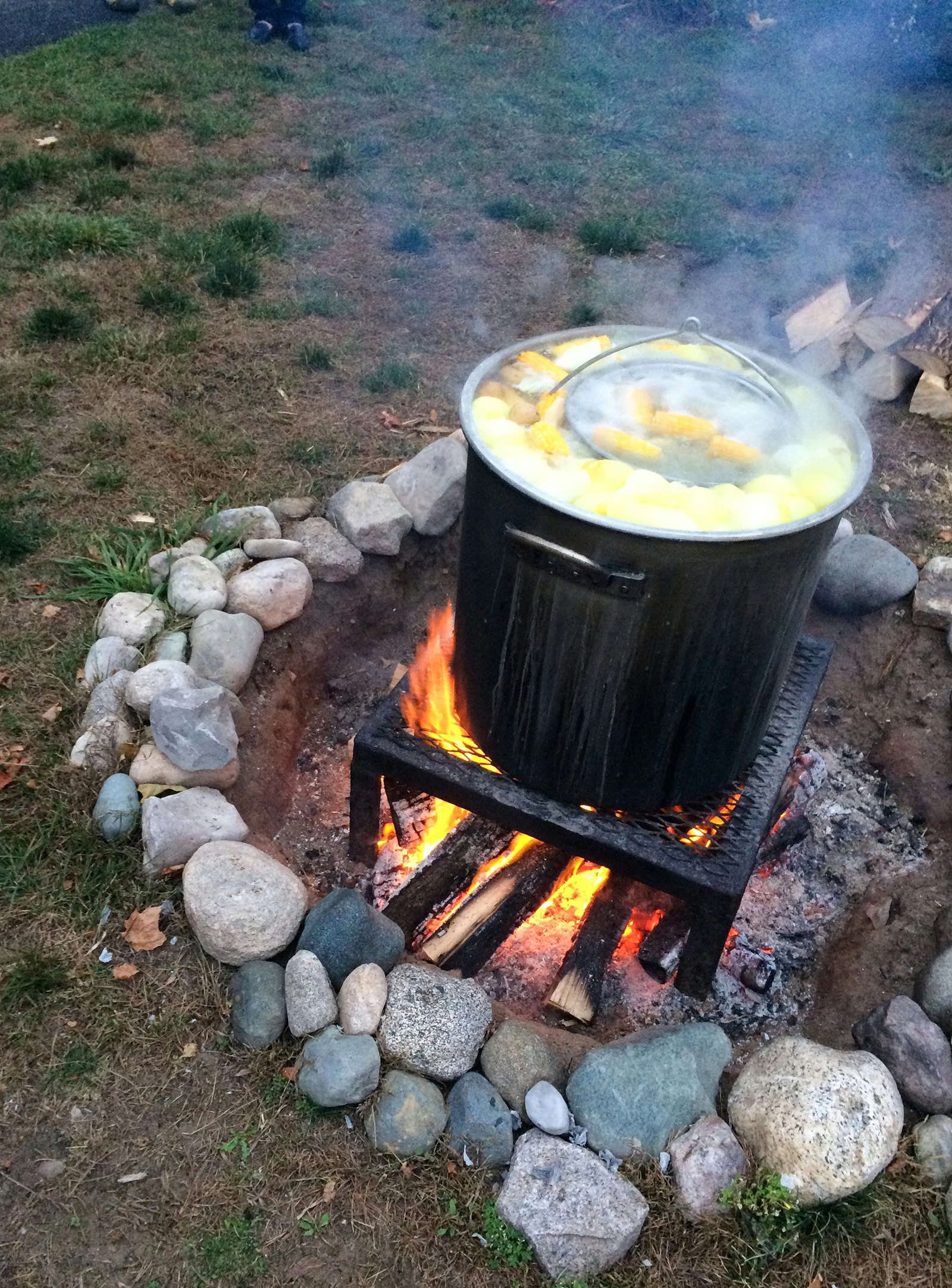

A tour of Northern Michigan serves up stunning lake views © Trisha Ping / Lonely Planet
A first visit to one of the Great Lakes redefines ideas of what a lake can be. The deep, cold waters stretch out as far as the eye can see toward a flat and limitless blue horizon. Freighters cross the depths; kayakers and swimmers splash in the shallows; and lighthouses dot the often treacherous shores.
Traveling around the top of the Michigan mitten opens up a wide window into the past and present of life on Lake Michigan, from Native American myths to modern makers.

Traverse City, Northern Michigan’s leading light
The tourism capital of Northern Michigan is Traverse City. And with good reason – this small town is truly idyllic, with plenty of lakefront access via Grand Traverse Bay, some stellar restaurants and a cheerful downtown that is practically the poster child for Main Street USA. Right in the heart of downtown, Traverse City Pie Company serves up pies of all sorts. The sweet ones draw from Michigan’s homegrown fruits – the state is second only to California in fruit production. Try the ABC pie, which features crisp local apples, tart blueberries and juicy cherries. The savory pies deliver sustenance with a story: known as a pasty (rhymes with “nasty”) these hearty, hand-held pies stuffed with meat and potatoes were popularized by the Cornish miners who came to work in the copper mines in the 1800s. Today, they’re still a regional comfort food in the upper Great Lakes.

More Traverse City history can be explored at The Village at Grand Traverse Commons. Opened in 1885, this one million square foot complex was a state-of-the-art mental hospital, the Northern Michigan Asylum for the Insane. Founder Dr John Decker Munson was a proponent of the fin-de-siècle “beauty is therapy” movement in psychiatric care, and the beautifully-manicured grounds of the asylum – more than 100 different tree species can be found – and spacious, sunlit rooms allotted to each patient followed through on that belief. Some 40,000 patients passed through before the doors closed in 1989; today most of the complex has been renovated as a mixed commercial and residential space. Stroll the arcade and visit the shops, restaurants and coffee houses before taking a tour, where a knowledgeable guide will tell you stories of the old asylum; let you walk the spooky, spider-strewn tunnel system that connects the buildings; and explore the still unrenovated spaces.
Early 20th century life on the Leelanau Peninsula
On the quieter side of Grand Traverse Bay lies the Leelanau Peninsula. This wooded, gently-rolling countryside features some relaxing hikes, charming small towns and a few wineries. There’s a real opportunity to taste the past here – one of the best is at Hillside Homestead in Suttons Bay, Michigan. If you've ever wondered what your grandparents' childhoods were really like, this is the place to find out. In this restored 1910 farm house, all the furniture and appliances are period-appropriate. Proprietor Susan Odom, who previously worked as a historical interpreter at Greenfield Village in Dearborn, is committed to running her B&B the old-fashioned way: with coffee made on a cast-iron, wood-burning stove and using recipes from Victorian cookbooks for her farm dinners, which are open to the public as well as guests (make a reservation). Although don’t fret, there is WiFi (but no TV). Food served is always local, and often hyper-local: Odom raises her own pigs and chickens, and the farm is located in a working orchard.

Black Star Farms offers another chance to taste history on the Leelanau Peninsula as the winery and restaurant in Suttons Bay hosts weekly fish boils on Thursdays in the summer and fall. Fish boils are a tradition in the upper Great Lakes, the equivalent of the New England clambake or a Southern crawfish boil. Fresh-caught fish is tossed into a large kettle full of boiling, seasoned water with potatoes, onions and corn. Once the whole shebang is cooked, kerosene is added to the fire beneath it, causing the flames to surge and the kettle to boil over – this allows the starchy, salty froth to be removed from the water’s surface before the food is drawn out. It’s also a handy way of announcing dinner is ready. Coleslaw and bread are the usual accompaniments.
Fishtown, a Great Lakes fishing village
In the early 20th century, small fishing villages dotted the shores of the Great Lakes, as fishermen ventured out to cast their lines or nets. Each fisherman had his own shanty near the docks, where the catch of the day would be processed and often smoked or dried; nearby shops and stalls sold these wares to shoppers.

The regulation and subsequent industrialization of the fishing industry killed most of these villages, but the nonprofit Fishtown Preservation Society is committed to maintaining this connection to history. Today, visitors to Fishtown can wander the docks and occasionally spot fishermen at work. In the fall, you can see salmon attempting to fling themselves upriver to spawn. Some of the former shanties are now gift shops and cafes. You can also sample fresh, local seafood at Carlson's Fishery, which sells piquant fish sausage, smoked fish paté, creamy chowder and lick-your-fingers-good smoked whitefish.
Soaring Sleeping Bear Dunes
Native Americans were the first inhabitants of Northern Michigan, and place names and local lore frequently reflect this history. The striking, wild and often windswept Sleeping Bear Dunes National Lakeshore is one example. This 20-plus mile stretch along the coast of Lake Michigan got its name from an Ojibwe legend about a mother bear and her cubs, driven by desperation to swim to Michigan from Wisconsin. The mother bear made it across, but the cubs didn’t – the Great Spirit Manitou was said to have created the Sleeping Bear Dune to represent the mother and North and South Manitou islands, which can be seen from the shore, to mark the resting place of her two cubs.

Nowadays visitors come to Sleeping Bear Dunes National Lakeshore to climb the dunes, camp, hike, visit lighthouses and enjoy the wide and sandy beaches. Get an overview of all of the above via the fully accessible Sleeping Bear Heritage Trail, which covers a 20-mile stretch between Empire and Port Oneida Road and is closed to car traffic. This winding, tree-lined corridor passes several trailheads, scenic overlooks and even a beach or two. Packed with runners, walkers and cyclists in the summer, it’s also a snowy retreat for skiers in the winter.
Sleeping Bear Dunes is also the site of one of the Great Lakes’ most stunning drives, the Pierce Stocking Scenic Drive. This 7.4-mile loop is a riot of color in fall, with beeches and maples ablaze. Several scenic overlooks provide dramatic views of Lake Michigan and Glen Lake.

Make it happen
Summer and fall are the busiest seasons for travel in Northern Michigan, although snow-blanketed, cozy winter has its own charm (be aware that some attractions may be closed or have limited hours). Traverse City is swarmed by tourists in summer, especially during the National Cherry Festival the first week of July.
Driving is the best way to experience Northern Michigan and roads are typically well-maintained. During peak fall foliage and on summer weekends, the M-22 can become congested, so allow extra driving time.
Trisha Ping traveled to Northern Michigan with support from Pure Michigan. Lonely Planet contributors do not accept freebies in return for positive coverage.
https://shop.lonelyplanet.com/products/eastern-usa-travel-guide-4
















